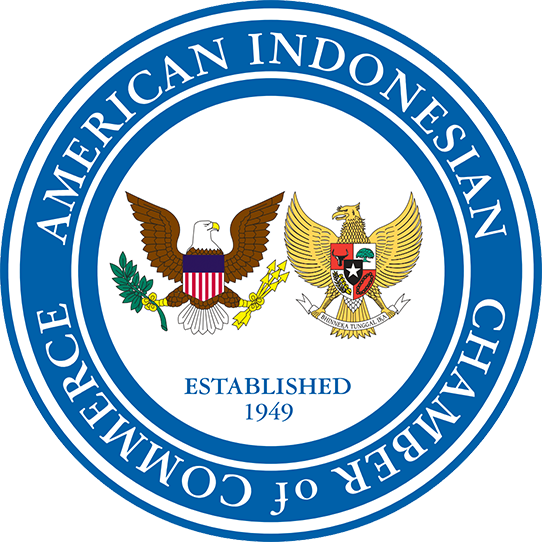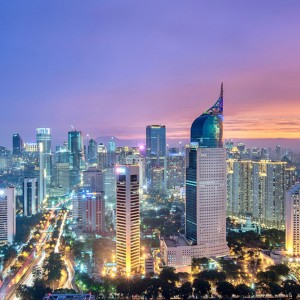American Indonesian Chamber of Commerce

- HOME
- ABOUT AICC
- The History of AICC
- Major Initiatives
- Trade, Tourism, and Investment Program (TTI)
- Opportunity Indonesia
- Introducing Indonesia: Scholastic Ambassador Program
- Preventing A Lost Generation
- Comprehensive Indonesian-English Dictionary
- Sustain Sumatra
- 10 Year’s After: A nationwide public awareness program
- Support to Mandiri Craft
- Congressional Staff Visit
- Business and Cultural Programs in Dallas, Texas
- US-Indonesia Women’s CEO Summit
- Topeng Sehat: AICC Initiative Against COVID-19
- 2021 Shipping NYC Surplus PPE To Indonesia
- Board of Directors
- Membership Benefits
- FAQ
- Membership Registration and Forms
- EVENTS
- LINKS
- TRADE LEADS
- LATEST NEWS/COMMENTARY
- DOING BUSINESSS
- COUNTRY DATA
- BLOG POSTS





AMERICAN INDONESIAN CHAMBER OF COMMERCE





| Idealism and Realism Meet in Indonesia's New Capital | |
| Commentary by Wayne Forrest
On April 24, AICC helped organize an event that was part of a USG Reverse Trade Mission for Indonesia’s new capital Nusantara, probably Indonesia’s most ambitious infrastructure ever. Assembled at a conference room donated by Citi at their downtown NY headquarters were 15 Indonesian planners from various entities managing the project, US private companies in the smart city tech space, as well as US Trade and Development Agency (TDA) officials. Not only did the event provide an opportunity for companies to understand a potential new market, it also demonstrated the new idealism and self-esteem President Jokowi has imbued in his country, especially in infrastructure, as well as its practical limitations. |
|
|
|
| l-r) Saffet Tinaztepe, Director Global Infrastructure Finance, Citi; Insyafiah, Director for Funding, Nusantara Capital Authority (OIKN); Armando Rivera Jacobo, Partner, White & Case; Selly Indrawati, Director of Operations and Marketing, PT Bina Karya; Wayne Forrest, President, American Indonesian Chamber of Commerce | |
| It made me reflect on another signature infrastructure project: the Jakarta Bandung fast train known as “Whoosh”. Connecting the two projects is a key principle: value driven procurement. Announced during his first term in 2015, Whoosh symbolized a major step forward in Indonesia’s self-esteem and was soon followed in 2017 by the plan to build a $35 billion city in secondary forest lands on the island of Kalimantan (Borneo), mostly with private/foreign capital. Similar to JFK’s plan to land on the moon within a decade, these efforts would help redefine Indonesia as a modern, up-to-date society.
In a country with almost entirely single-track rail and low speeds, Indonesia would become the first SEA nation with dual track, high-speed rail. With little capacity to plan or build such a project, Jokowi turned first to the Japanese, ultimately shifting away from their extensive plan after Xi Jinping offered to build it at a lower cost as part of his Belt and Road Initiative and reportedly did not require Indonesia to assume any fiscal burden or debt guarantee. The Chinese made long term concessional loans with 10-year grace periods. Here’s where value driven procurement comes in. It is now clear 9 years later that Whoosh, which became operational in October 2023, may not have been such a great deal. President Joko Widodo opted for the Chinese proposal because it sought no government guarantee and offered a swifter time frame and lower cost. In practice, renegotiations and delays have resulted in terms matching the original Japanese proposal, but with higher financing costs. In fact, the project has required eight years, US$8 billion and substantial government investment. The state-railway company that partnered with Chinese contractors to build Whoosh, KAI, is now seeking debt relief from the government. KAI sits on an initial $4.55 billion debt incurred to build the train- although it is over a long period- plus another $560 million due to cost overruns last year. According to financial projections viewed by the Jakarta Post, the project will lose $200 million this year and it is not clear when the numbers turn profitable. KAI spokesperson Agus Dwinanto Budiadji recently told reporters that KAI has submitted a request for financial breaks from the Government’s FastTrain Committee. Budiadji warned, “If the infrastructure costs are placed on the operator, the burden will be very heavy indeed.” I don’t see how the government will now turn its back on the Whoosh project. As it has had to do with many of the toll roads, which bankrupted the state-owned construction company Wijaya Karya, it will likely find the means to make substantial cash infusions it did not budget for. Like many commuter rail projects around the world, Whoosh will need a heavy subsidy. This became clear during the discussion at the April 24 event, where I chaired a panel that included AICC members from Citi and White & Case who work daily on infrastructure finance issues. Rail often needs a subsidy as ticket prices cannot be so high as to drive away riders and tax revenues from new businesses surrounding stations may not be enough either to finance debt payments. Which takes us back to Nusantara. Because the government can only pay about a fifth of the estimated costs it will rely heavily on private investment as well as PPP (public-private partnerships). Spending money wisely using the principle of value-driven procurement will be key. Once you’re locked into a low bidder its hard to back out when its clear there has been poor management, planning or even deception. Nusantara’s planners should learn from the Whoosh project and take care to not just award projects to the lowest bidder. To illustrate the point on April 24th we had a video link presentation by White House official Cara Carmichael, Director for Federal Buildings, Team Lead, Carbon-Free Buildings, who argued that purchasing quality over low price saves money time and time again over time. Several of the Indonesian delegates seemed eager to carry on future discussions and learn more about US Federal procurement practices. Nusantara’s delegates described the new capital as a “world city”, incorporating best practices from everywhere. The idealism of their enterprise was clearly on display. Let’s hope it is balanced by a sagacious realism. (The views represented are the writer’s own and are not necessarily shared by members of the American Indonesian Chamber of Commerce) |
